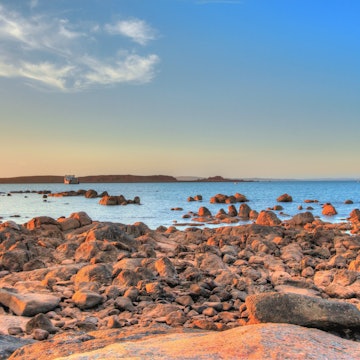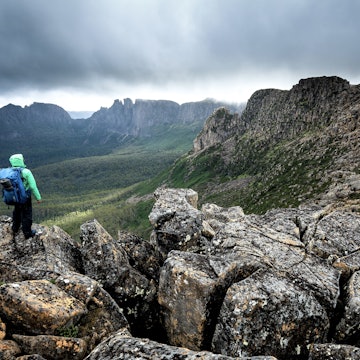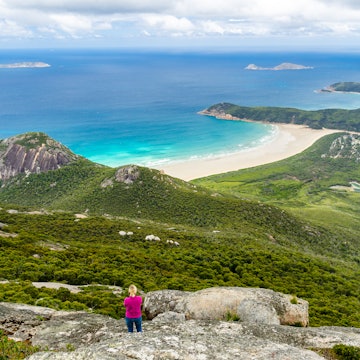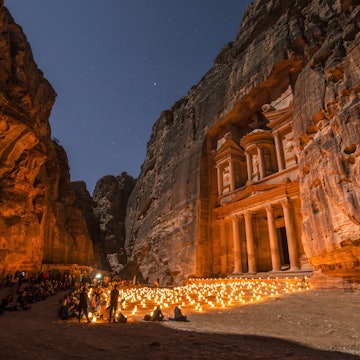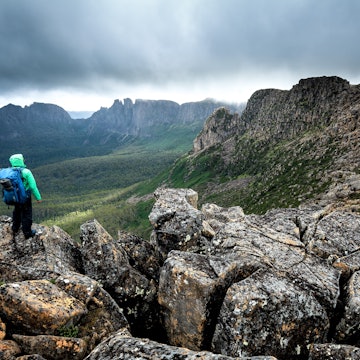

A saltwater crocodile cooling himself with his open mouth © Australian Scenics / Getty Images
The closest living relative to the dinosaur, with a bite force thought to rival that of a T.Rex, saltwater crocodiles are the ultimate apex predators. With more than 100,000 of them patrolling the waterways of Australia’s Northern Territory alone – that’s one saltie for every two human residents – it’s the best place on the planet to see these reptilian relics in action.
Valued at more than AU$100 million, the Northern Territory’s crocodile industry isn’t just important to the local economy, but also to croc conservation, with croc tourism – and even croc farming – credited for an enormous rebound in their numbers since they became a protected species in the 1970s. There are now loads of ways to see a crocodile up close in the Top End, from low-impact wildlife viewing to more manufactured interactions. Given claims by animal welfare experts that using animals for the purpose of entertainment can be harmful for them, however, some options raise ethical questions. To help you make the most informed decision about how you spend your croc-viewing dollars in Australia, we take a closer look at the most popular experiences accessible from Darwin.
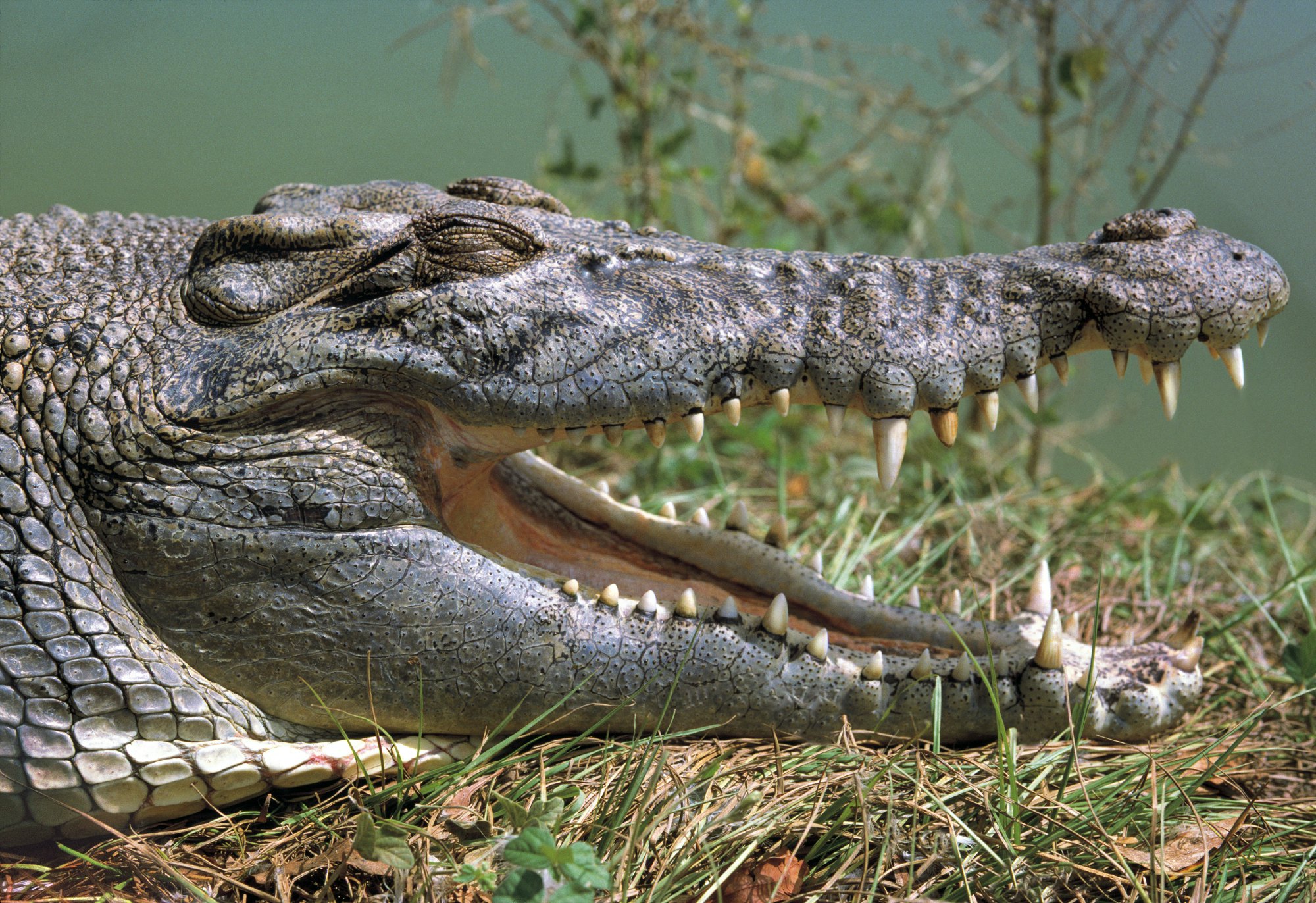
Whichever way you decide to go croc-spotting, don’t forget to be croc-wise: stay well back from the edge of any waterway where crocs may live, and don’t even think about taking a dip in any Top End water body unless official signage designates it croc-free, even if it doesn’t seem like there are any crocs around.
Corroboree Billabong boat tours
Part of the Mary River Wetlands – home to the world’s largest concentration of saltwater crocs – Corroboree Billabong is one of the best places in the Top End to see crocs in their natural habitat. On a boat cruise along the scenic billabong, 100km east of Darwin, you’ll spot plenty of salties as well as a huge variety of bird species and other wildlife that call the waterlily-rimmed billabong home. Crocs here are not baited, fed or prodded to perform for tourists, ensuring a relaxed, organic wildlife-spotting experience, with an informative commentary provided by knowledgeable guides.

Cahill’s Crossing
Known as Australia’s most dangerous water crossing, this shallow causeway across the East Alligator River in Kakadu National Park sees dozens of crocs congregate to feast on swarms of fish heading upstream when the road is submerged by the incoming tide. Despite its remote location, the spectacle always draws a crowd of tourists who line the west bank with their cameras and fishing rods.
Trying to cross the muddy river at high tide is prohibited, yet each year dozens of brazen drivers attempt it and end up being washed into the croc-infested waters. In 2017 a man was killed by a crocodile while attempting the crossing on foot, while others have been snatched while standing too close to the riverbank. You’ve been warned.
Outback Floatplane Adventures
This adrenaline-packed tour begins with a scenic floatplane ride across Darwin Harbour to the stunningly remote Sweets Lagoon – the former lurking ground of Sweetheart, the enormous stuffed saltie on display at Darwin’s Museum and Art Gallery of the Northern Territory. Otis, a 4.6m saltie, is likely to be hanging around the pontoon to greet you before you head off on a boat cruise along the pristine lagoon, followed by an airboat tour along narrower surrounding waterways crawling with crocs. If you’re lucky, you might also meet some of Otis’ neighbours, who have names like ‘Chug’, ‘Bone Cruncher’ and ‘Nitro’.

While the half-day tour isn’t cheap, it’s one of the Top End’s best thrills, buoyed by the expertise of guides who know the lagoon – and its resident crocs – inside out. There’s no croc feeding, though you’re welcome to tempt Otis by taking a dip in a swimming cage attached to the side of the pontoon.
Crocodylus Park
The brainchild of renowned crocodile biologist Professor Grahame Webb, Crocodylus Park, 15km from the centre of Darwin, is home to more than 1000 crocs (including salties, freshies and American alligators) and a mini-zoo comprising big cats, monkeys, large birds and more. Tours (held four times daily), include informative wildlife talks and croc feeding and handling sessions, with a new boat cruise offering an opportunity to view salties in a more ‘natural’ setting.
Jumping croc boat tours
Perhaps only when you see a saltie launch its enormous body out of the water to snatch its prey can you fully appreciate the extent of its power. On an hour-long jumping croc cruise down the Adelaide River, about 75 minutes drive from Darwin, you can expect to get a good fright or two when locals such as Dominator and his arch rival Brutus, two of the river’s biggest salties, jump out of the murky water to snap up hunks of meat dangled from poles alongside your tour boat.
Jumping croc tours (there are several operators) are regulated to ensure crocs aren’t fed anything they wouldn’t usually eat in the wild, with snacks doled out in small enough portions to prevent crocs becoming dependent on them as their key food source. It’s worth noting, however, that feeding wild animals – including crocodiles – is discouraged by animal welfare experts, as well as the Northern Territory government itself.

Crocasaurus Cove
The closest you can get to swimming with a croc without becoming its next meal, this croc theme park of sorts in central Darwin is best known for its ‘Cage of Death’, a super-strong clear cylinder with room for two people that is lowered into a pool containing a large saltwater crocodile.
Crocosaurus Cove’s larger residents include a former showbiz croc and several ‘problem crocs’ with a taste for boat motors or livestock that typically sees repeat offenders put down, though critics argue this fact doesn’t compensate for the stress the crocs endure while being coaxed by handlers to perform for tourists in the Cage of Death. Baby crocs can also become distressed while being handled, which is another activity on offer here. Other attractions include a reptile display, a freshwater aquarium, a ‘fishing for crocs’ experience and an enclosure of juvenile crocs separated from a swimming pool by a wall of glass.
The writer travelled to the Northern Territory with support from Tourism NT (northernterritory.com) and Venture North Safaris (venturenorth.com.au). Lonely Planet does not accept freebies for positive coverage.






